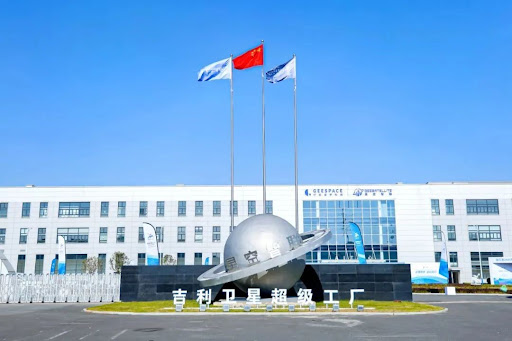By Dou Hanyang, People’s Daily
In a cavernous workshop lined with robotic arms and humming conveyor belts, a satellite takes shape – not in years, but in weeks.
Geely, best known as a leading car manufacturer in China, is now building satellites in just 28 days. At its satellite factory in Taizhou, east China’s Zhejiang province, the company is applying the same intelligent manufacturing know-how that put millions of its cars on the road to a very different frontier: low-Earth orbit(LEO).
The facility, operated by Geespace, a subsidiary of Geely, marks a leap forward in the commercial space industry, where satellite production has long been a slow, bespoke affair.
Traditionally, it takes hundreds of engineers and technicians up to two years to produce a single satellite, across design, manufacturing, assembly, and final testing. Geely’s new factory can turn one out in less than a month – with a team of just 30. “We can produce up to 500 satellites a year,” said Liu Yong, deputy general manager of Geespace.
“Automation has completely changed the game,” said Liu. “From design and R&D to production, testing, and satellite operation, every step is now faster, smarter, more integrated.”
Inside the factory, production unfolds with industrial choreography. Engineers input specifications at control panels while autonomous robots glide across the floor, delivering honeycomb panels to the subassembly line. In all, more than 60 programmed steps bring the satellite together. In the final stage, robotic arms follow precise programming to drive more than 1,600 screws into a 100-kilogram satellite, with an accuracy margin of less than 0.01 millimeters.
“Artificial intelligence drives much of the operation,” Liu explained. The factory’s intelligent quality inspection system, powered by AI algorithms and machine learning, monitors every stage of production in real time, flagging microscopic defects and cross-referencing in-orbit satellite data with factory output to ensure each unit meets the demand of mass deployment.
Once assembled, each satellite undergoes a range of tests designed to mimic the harsh realities of space. In a solar simulation area, engineers replicate the conversion of sunlight into electrical energy. In another, satellites are placed in a thermal vacuum chamber and subjected to temperature extremes ranging from -180 degrees to 100 degrees Celsius. Electromagnetic compatibility tests follow, ensuring each satellite can communicate reliably and resist interference once in orbit.
The satellites are tailored for LEO missions, supporting a range of applications like emergency communications, maritime connectivity, and aviation data services. China’s commercial LEO constellation development is still in its early stages and faces multiple challenges. Scaling up production is essential to secure the necessary orbital and frequency resources in space.
“As demand for satellite applications grows, scaling up production and achieving breakthroughs in key technologies will be crucial to strengthening China’s competitiveness in the global space industry,” Liu said.
